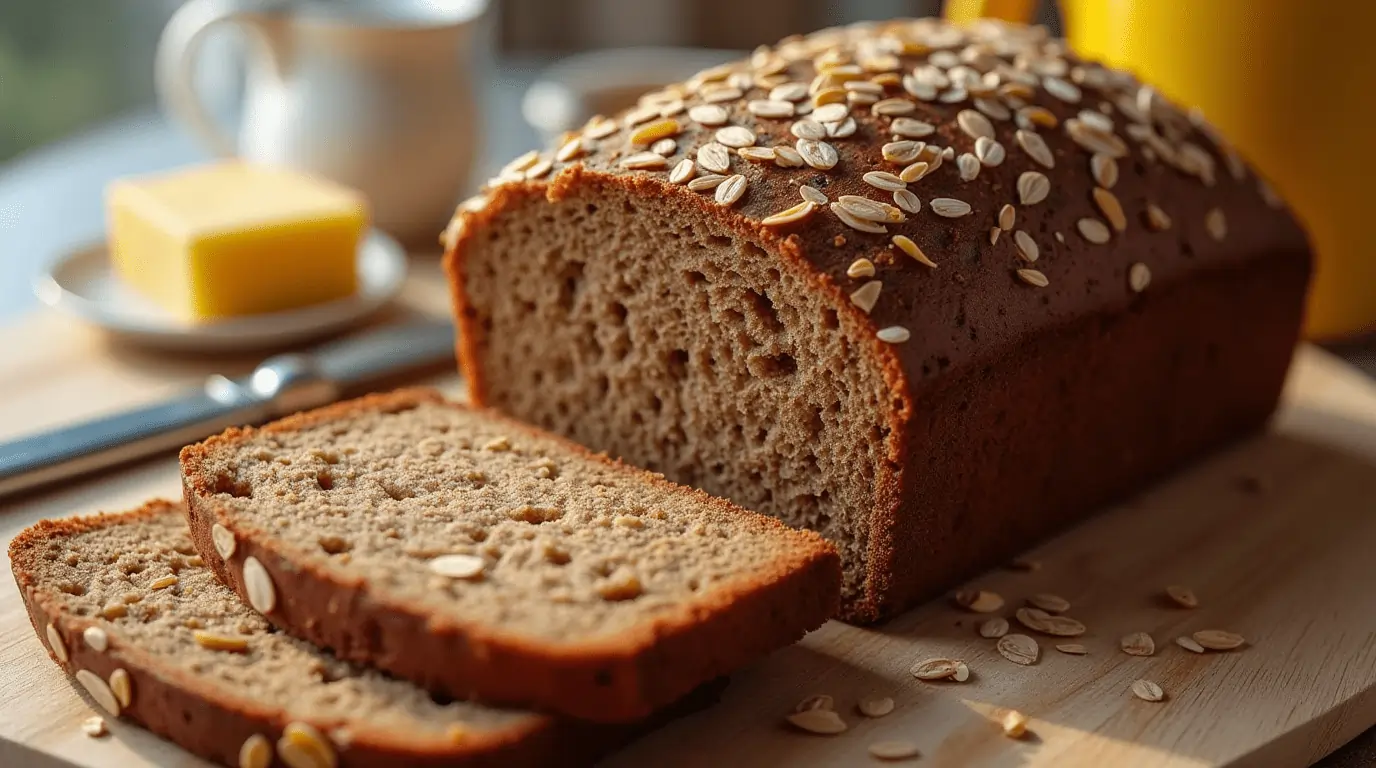Introduction to Oat Molasses Bread Recipe Maine
A Classic Maine Tradition
Oat molasses bread is more than just a recipe; it’s a piece of Maine’s heritage. This hearty, slightly sweet bread has been a staple in households across the state for generations. Born out of necessity and ingenuity, the recipe reflects Maine’s agricultural roots, where oats and molasses were abundant and affordable. Today, this bread remains a beloved symbol of comfort and tradition, enjoyed at family gatherings and local bakeries alike.
The Role of Oats and Molasses in Maine’s Culinary History
Oats and molasses have deep roots in New England’s culinary traditions. Oats, cultivated for their hardiness, provided sustenance during harsh winters, while molasses, a byproduct of the sugar trade, brought a touch of sweetness to an otherwise austere pantry. Together, these ingredients created a bread that was both nutritious and delicious, embodying the resourcefulness of early Maine cooks.
Why This Recipe Stands Out
This oat molasses bread recipe is cherished for its unique combination of flavors and textures. The oats lend a nutty, wholesome taste, while the molasses adds a rich, caramel-like sweetness. Beyond its taste, this bread is packed with nutrients, making it a healthier alternative to white bread. Its versatility also makes it suitable for various occasions, from breakfast toast to dinner rolls.
Table of Contents
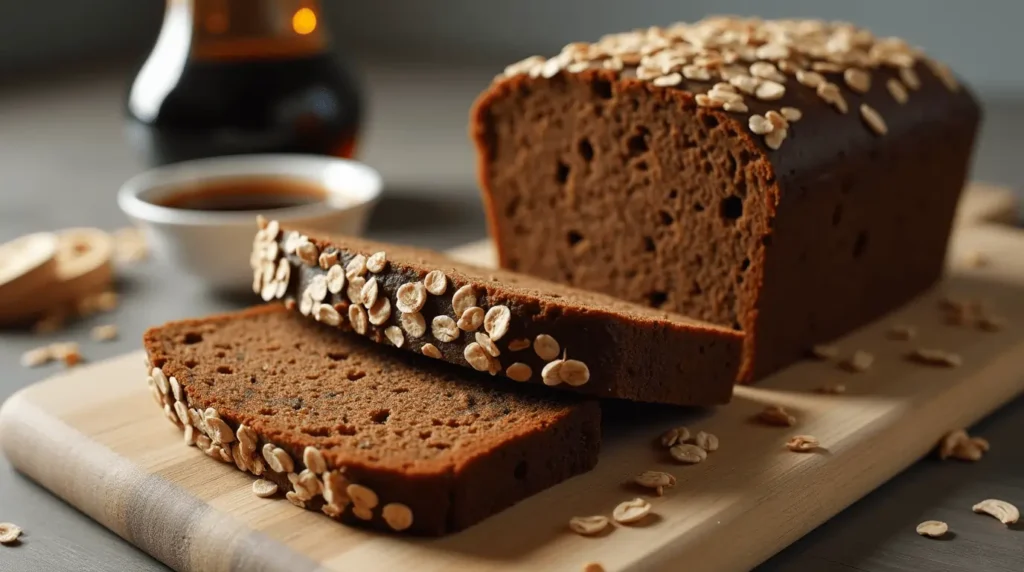
Why You’ll Love This Recipe
Easy and Beginner-Friendly
Mastering the art of bread-making can seem daunting, but the Oat Molasses Bread Recipe Maine simplifies the process for beginners. This recipe is designed with straightforward steps, ensuring even novice bakers achieve impressive results. With minimal equipment and clear instructions, creating a wholesome loaf becomes accessible and rewarding. The dough’s forgiving nature allows for easy adjustments, making it perfect for those new to baking. By following the Oat Molasses Bread Recipe Maine, you’ll craft a flavorful bread with rustic charm, proving that great baking doesn’t require professional skills. It’s the ideal introduction to traditional Maine baking traditions.
Nutritious and Delicious
The Oat Molasses Bread Recipe Maine combines wholesome ingredients with exceptional flavor. Packed with fiber-rich oats and mineral-dense molasses, this bread offers a nutritious boost to any meal. The natural sweetness of molasses complements the hearty texture of oats, creating a balance that delights the palate. Beyond its health benefits, this bread’s rich flavor and tender crumb make it a satisfying choice for breakfast, snacks, or dinner. The Oat Molasses Bread Recipe Maine is proof that healthy eating can be indulgent and delicious.
Versatile and Customizable
The Oat Molasses Bread Recipe Maine offers endless possibilities for personalization. Add nuts, seeds, or dried fruits to enhance texture and flavor, or experiment with spices for a unique twist. Its adaptable nature makes it suitable for various dietary preferences, including gluten-free options. The Oat Molasses Bread Recipe Maine ensures every baker can create a loaf tailored to their tastes and needs.
Ingredients for Oat Molasses Bread
Core Ingredients
- Dry Ingredients: Flour, oats, salt, and yeast.
- Wet Ingredients: Warm water, molasses, and oil.
- Optional Additions: Nuts, seeds, dried fruits, or spices for extra flavor.
Choosing the Right Ingredients
For the best results, opt for unsulfured molasses, which has a pure, robust flavor. High-quality oats are also essential, as they form the backbone of the bread’s texture and taste.
How to Make Oat Molasses Bread
Preparing the Dough
- Accurate Measurement of Ingredients: Precision is key to achieving consistent results. Use a kitchen scale for dry ingredients and measure liquids at eye level.
- Mixing for Consistency: Combine ingredients until the dough is smooth and slightly sticky. Be careful not to over-mix, as it may result in a denser bread.
Kneading the Dough
- Hand-Kneading Techniques: Lightly flour a clean surface and knead the dough for 8-10 minutes, folding and pressing until it becomes elastic.
- Stand Mixer Instructions: Use a dough hook attachment and mix on medium speed for 5-7 minutes, checking for a smooth texture.
Fermentation and Rising
Place the dough in a greased bowl, cover it with a damp cloth, and let it rise in a warm, draft-free area until it doubles in size, usually about 1-2 hours.
Baking the Bread
- Timing and Temperature: Preheat your oven to 375°F (190°C) and bake the bread for 30-35 minutes.
- Checking for Doneness: The bread is ready when the crust is golden brown, and it sounds hollow when tapped on the bottom.
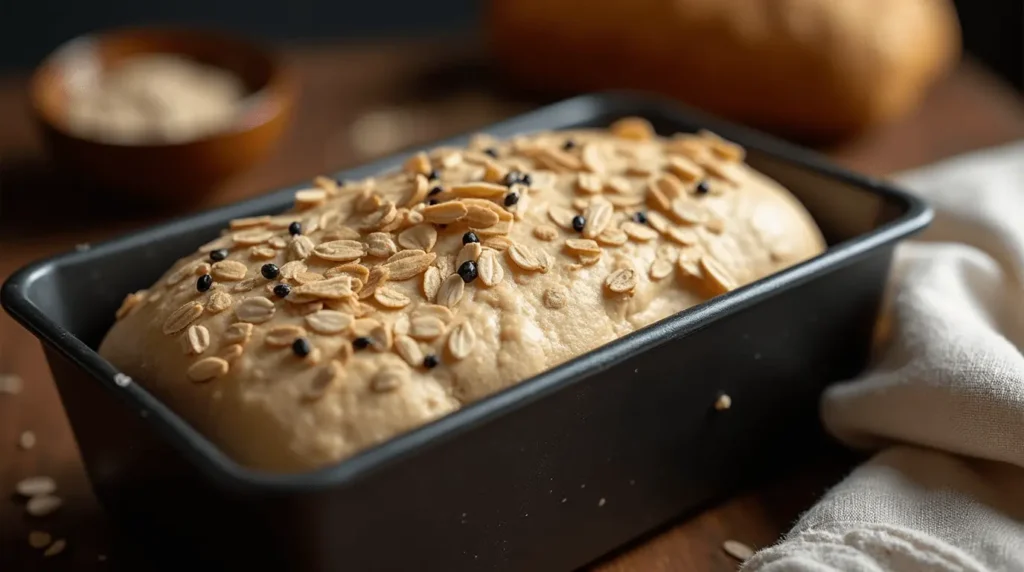
Troubleshooting Common Baking Issues
Why Is My Bread Dense?
A dense loaf in the Oat Molasses Bread Recipe Maine often stems from insufficient kneading or inactive yeast. Proper kneading develops gluten, which is essential for a light, airy texture. Ensure yeast is fresh and that the water temperature is ideal to activate it effectively. Overloading the dough with heavy ingredients can also weigh it down. Follow the Oat Molasses Bread Recipe Maine precisely for the best results.
Fixing Dry or Crumbly Textures
Dry bread can stem from incorrect flour measurements or overbaking. Use a kitchen scale and keep an eye on the baking time.
Addressing Undercooked or Gummy Bread
Ensure your oven is properly preheated and check the bread’s internal temperature with a thermometer (it should read 190°F/88°C).
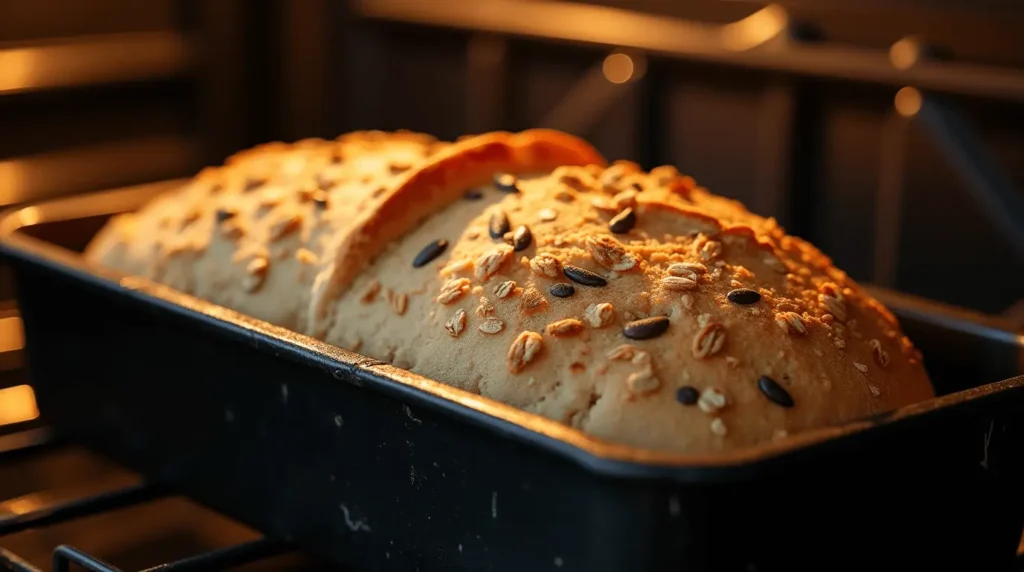
Variations and Customizations
Adding Whole Grains or Seeds
Incorporate whole grains like spelled or rye for added texture, or sprinkle seeds such as sesame, sunflower, or flax for a nutritional boost.
Gluten-Free Adaptations
Replace regular flour with a gluten-free blend and ensure your oats are certified gluten-free to accommodate dietary restrictions.
Nutritional Benefits of Oat Molasses Bread
Why Oats Are Good for You
Oats are packed with essential nutrients, offering a wealth of fiber, vitamins, and minerals. They support heart health, aid digestion, and keep you feeling full longer.
The Benefits of Molasses
Molasses is more than a sweetener; it’s a source of essential minerals like iron, calcium, and magnesium, making it a nutritious addition to your diet.
Storing and Freezing Oat Molasses Bread
Best Practices for Storing Bread
Store the bread in an airtight container or wrap it in a clean kitchen towel to maintain freshness for up to three days at room temperature.
Freezing and Reheating Tips
Pre-slice the bread before freezing to simplify the reheating process. Wrap slices individually and thaw at room temperature or warm in a low oven.
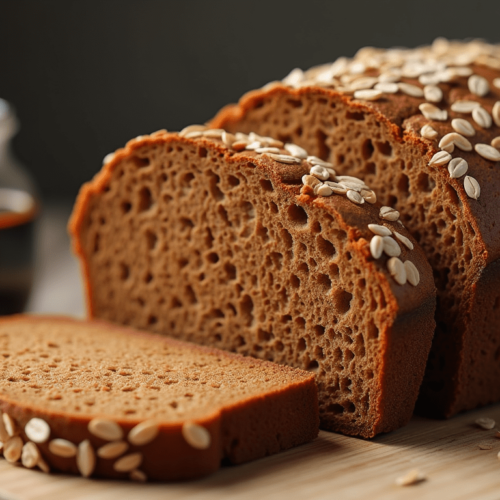
Oat Molasses Bread Recipe Maine: Delicious, Nutritious, and Easy to Make
Ingredients
- 2 cups whole wheat flour
- 1 cup rolled oats
- 1 packet active dry yeast (2 1/4 tsp)
- 1/2 cup unsulfured molasses
- 1 cup warm water
- 2 tbsp vegetable oil
- 1 tsp salt
Instructions
- Activate the Yeast: Warm milk and water until lukewarm (not hot). Add yeast and honey (or maple syrup), then stir gently. Let the mixture sit for 5 minutes until it becomes bubbly.
- Prepare the Dry Ingredients: In a large mixing bowl, combine rolled oats, whole wheat flour, bread flour, and salt. Mix well.
- Mix Wet Ingredients: Add molasses, softened butter, and cooked oats to the yeast mixture. Stir thoroughly.
- Form the Dough: Gradually add the wet mixture to the dry ingredients. Mix until a soft, pliable dough forms.
- Knead the Dough: Knead the dough by hand or use a stand mixer fitted with a dough hook. Continue kneading for 8–10 minutes until the dough is smooth and elastic.
- First Rise: Transfer the dough to a greased bowl. Cover with a damp cloth and let it rise in a warm spot for 1 to 1.5 hours, or until it doubles in size.
- Shape the Dough: Punch down the dough gently to release air. Shape it into a loaf and place it on a greased baking sheet or in a greased loaf pan.
- Second Rise: Cover the shaped dough and allow it to rise again for 30–40 minutes.
- Bake: Preheat the oven to 375°F (190°C). Bake the bread for 40–50 minutes, or until the crust is golden brown and the loaf sounds hollow when tapped.
- Cool and Serve: Let the bread cool completely on a wire rack before slicing and serving.
Frequently Asked Questions
What does molasses do in bread?
Molasses plays a crucial role in the Oat Molasses Bread Recipe Maine, contributing both rich flavor and moisture to the bread. Its rich, deep sweetness enhances the bread’s taste, creating a satisfying, robust loaf. Beyond flavor, molasses helps the dough retain moisture, resulting in a tender crumb. Additionally, it supports yeast activation, aiding the fermentation process for a perfect rise in the Oat Molasses Bread Recipe Maine.
What kind of molasses is best for baking bread?
For the Oat Molasses Bread Recipe Maine, unsulfured molasses is the ideal choice. This variety is milder in flavor, providing a natural sweetness without overpowering the bread. It also retains beneficial nutrients, contributing to both the taste and texture of the loaf. Blackstrap molasses, while more intense, can be used for a stronger flavor but may alter the bread’s balance.
Is oat bread better than wheat bread?
When comparing oat bread to wheat bread, the choice largely depends on dietary needs. The Oat Molasses Bread Recipe Maine offers a richer nutritional profile, thanks to the fiber and vitamins found in oats. Oat bread tends to be denser and more filling, while wheat bread is lighter and fluffier. Both have their merits, but oat bread may be a better option for those seeking heart-healthy benefits.
Why use molasses instead of sugar?
Molasses offers a deeper, more complex flavor than sugar, making it an ideal choice for the Oat Molasses Bread Recipe Maine. Unlike refined sugar, molasses is rich in essential minerals like iron, calcium, and magnesium, enhancing the bread’s nutritional value. It also provides natural sweetness with less processed impact, offering a healthier alternative while improving the bread’s color and moisture.
What helps bread to become light and fluffy?
To achieve a light and fluffy texture in bread, proper yeast activation is essential. In the Oat Molasses Bread Recipe Maine, allowing the dough to rise adequately helps trap air pockets, creating a soft structure. Additionally, using the right flour, ensuring accurate moisture balance, and kneading the dough correctly contribute to the bread’s airy and tender consistency.
Will yeast feed on molasses?
Yes, yeast can feed on molasses. In the Oat Molasses Bread Recipe Maine, molasses acts as a natural sugar source, providing essential nutrients for yeast fermentation. This process helps the dough rise, contributing to a lighter texture. The rich, dark sweetness of molasses also adds depth to the flavor, enhancing the overall quality of the bread.
Conclusion
Oat molasses bread is a delightful nod to Maine’s rich culinary history. Its hearty texture, sweet flavor, and nutritional value make it a versatile addition to any meal. By following this recipe and experimenting with variations, you’ll create a loaf that’s uniquely yours. Embrace the tradition, savor the flavors, and share this timeless recipe with loved ones.

